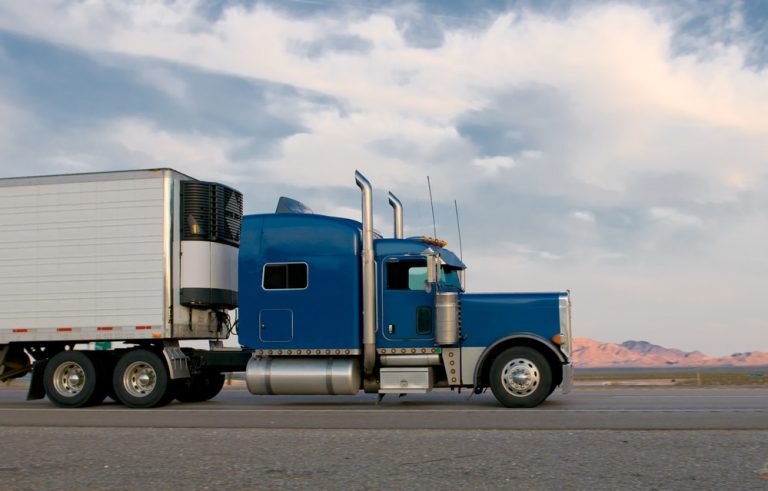Every year there are safety checks, days, and weekends when both commercial and non-commercial vehicles can be randomly inspected. It is a nuisance, but we all know why it is necessary. The safety blitz events help remove unsafe vehicles from the road. And that makes every highway just a little bit safer for all drivers.
In the trucking industry, safety blitzes are of course important. Commercial trucks are subject to more ‘wear and tear’ than non-commercial vehicles. They can also have a longer active duty life, and aftermarket resale. A good truck can last a long time if it is taken care of. This also increases the possibility of a mechanical issue with older Class 8 trucks in service.
The official CVSA Safety Blitz was supposed to happen in March 2020. It was postponed because of the pandemic, and then rescheduled to July. The results and data are now in from the ‘Operation Safe Driver Week” conducted July 12 to 19th, 2020. And it is a wake-up call for all drivers on the road.
How Many Drivers Were Stopped During Operation Safe Driver Week 2020?
Did you know that Operation Safe Driver Week happens in both the United States and Canada? Given the traffic flow between the two countries, the random inspection program is a cross-border initiative. And while traditionally the CVSA Safety Blitz has been targeted exclusively on commercial vehicles and CDL operators, this year, the inspection event was extended to civilian drivers.
“Although CVSA is a commercial motor vehicle safety organization, it was important that passenger vehicle drivers were also involved in this annual week-long driver safety enforcement initiative,” said CVSA President Sgt. John Samis with the Delaware State Police. “When commercial motor vehicles and passenger vehicles collide, no matter who was at fault, the results can be catastrophic, especially for the smaller and lighter passenger vehicle. Preventing crashes from happening requires every driver—commercial and personal—to be aware of how to safely share the road with other types of vehicles.”
Source Web 2020: American Trucker
In the 2020 Operation Safe Driver Week, more than 3,600 traffic enforcement officers from Canada the U.S.A. participated. Over the one-week period, there were 29,921 total commercial motor vehicles (CMVs) and 36,500 passenger vehicles pulled over and inspected.
What Were the Top Five Safety Problems Reported During the CVSA 2020 Safety Blitz?
The format of the safety blitz means a random selection of vehicles in different jurisdictions across North America. The data collected from the safety infractions helps transportation authorities understand some of the leading causes of highway collisions and injuries. It also points out where additional resources need to be spent to educate all drivers (commercial and passenger vehicles) about habits that increase accidents and fatalities.
The top five safety infractions noted during the 2020 safety blitz were not surprising. But they demonstrate how driver attention is critical to ensuring road safety. Both passenger vehicle (buses) and commercial transport trucks were assessed this year.
Drivers were issued 10, 736 warnings and citations this year for traffic enforcement violations. There were 4,659 citations (or tickets written for safety infractions) and 6,077 instances where drivers were provided a written warning from law enforcement.
1. Vehicle Speed Violations
Commercial drivers are always on a schedule. Like anyone else on the road, they can encounter traffic and delays. The difference is that they have a structured schedule to keep. Whether they are picking up drayage or container freight, or passengers on a bus.
In the 2020 safety blitz, the top infraction was speeding. There were 2,339 citations issues to commercial drivers who were exceeding the speed limit on the highway. It is also important to remember that exceeding the maximum safe speed limit substantially increases the severity of injuries in a collision, and factors into loss and damage to the vehicle and commercial freight.
2. Commercial Drivers Not Wearing a Seatbelt
Whether you are driving a heavy truck or a passenger vehicle, like a shuttle or bus, there can be a false sense of security. You are riding high above non-commercial vehicles, and in a larger and more protected driver seat area.
The false sense of safety of traveling in a truck or commercial passenger vehicle is one part of the problem. If you get into a small “bumper” accident, changes are you are not going to sustain serious injuries. Commercial vehicles are built rugged and tough. But a higher speed collision without wearing a seatbelt can result in serious, and even life-threatening injuries.
Commercial and passenger vehicle drivers do not always consider the implication of not wearing a seatbelt. Not only can your body be thrown by centrifugal force into the dash or windshield, you can actually become ejected from the vehicle. Instances where a driver is thrown by impact force out of the vehicle can be fatal.
During the CVSA 2020 Safety Blitz, failure to wear a seatbelt was the second most common citation in North America. There were 1,003 citations written to drivers who were not wearing a seatbelt while operating their commercial vehicle.
3. Using a Handheld Phone or Device While Driving
With all the technology out there today for commercial drivers, tailored to the needs of life on the highway, there is really no excuse to use a handheld device. Go handsfree. Equip your cab with a rig that feels comfortable for you.
Get a handsfree Bluetooth headset and synch it to your smartphone. And if you have to use your ELD, pull over to a rest stop or gas station to program your route and update your data. It is that easy. You will reduce the risk of a collision if you keep your eyes where they belong, alert and on the road.
The Operation Safe Driver Week saw 269 drivers issued citations for using handheld devices while operating a commercial vehicle. That statistic is getting better annually, and that is good news for all drivers.
4. Improper Lane Changes (Failure to Signal or Safely Execute)
Lane change no signal. No matter what kind of vehicle you drive, that kind of driving style puts you, your vehicle, and other vehicles on the road at risk. Since commercial vehicles are so much larger, and prone to greater areas of blind spots, caution when changing lanes is critical. The safety blitz issued 122 total citations for improper and hazardous lane changes.
5. Failure to Obey Traffic Control Devices
A traffic control device includes stop lights, yield signs, cross walks, stop signs, construction reduce speed signs and more. During the 2020 safety blitz, 617 drivers were issued citations for failing to stop where required. This is the leading cause of collisions that occur at intersections, and at highway on and off ramps.
What Can Commercial Drivers Do to Improve Safe Operational Practices?
Be aware that over time, as a commercial driver, you can develop habits that increase your risk for an accident tor collision. When you spend as much time behind the wheel as a CDL operator does, we know that it can be easy to forget best-practice procedures.
Protect your safety. Protect your vehicle and your CDL credentials, and work to make our highways safer for all drivers. For more resources on safe commercial driving tips, visit the Operation Safe Driver Week website.



